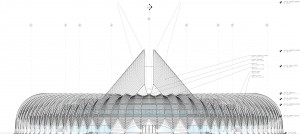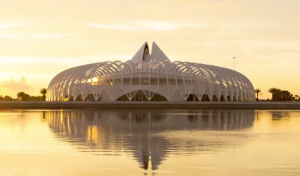
Approach
Most people do not walk around in historical garb or commute by horse and wagon, yet many look for houses that are falsely decorated to resemble something built in another era. Occupying a piece of history or adapting an existing structure is fine but erecting fake versions is questionable. The ATYPE approach to architectural design shuns this attitude to promote a product that is more honest and contemporary.
Context
While not engaged in replicating existing architecture, ATYPE gives great consideration to a potential building’s context. Blending when required, playfully subverting on occasion or contrasting when appropriate. Whether a building site is a peaceful landscape or a crowded urban site.
Character
Most buildings are void of personality; they are disjoint from both their owners and authors. There is no judgement in this statement as neutral structures can be fine examples of great architecture, but there are sometimes opportunities to have an edifice reflect some aspect of the Owner’s character that enriches it’s design. It is not how we are the same but how we are different that makes each of us unique.
Program
An architectural program is essentially a list of requirements for a building design; typically each room with its intended use and size. Beyond its implication of building size it can sometimes suggest layout with room proximities and adjacency as well as give specific direction to a design like a house that must be made of wood or a bedroom that must have a bay window. The design of a “home” can be approached in various ways with respect to program. Frequently, since most owners buy existing, an owner will adjust their own needs to a conventional house program (converting a spare room to an office). It can be difficult to have a prospective owner / home-builder think about their programmatic needs beyond these typical conventions. 3BR, 2BA bungalow with 2 car garage is fine for real estate agents but woefully inadequate as a prescription for domesticity. ATYPE looks to elicit the more nuanced aspects of a client’s potential way of living to develop a more personalized architectural program which in turn would lead to a greater individualized construct to accommodate it.
Material
What is it made of? Every building material has inherent aesthetic qualities associated with them (eg. wood is warm, steel is cold) and an owner’s selection of building materials is a reflection of his or her attitude towards shelter. Beyond these sensual qualities however, a material’s physical nature often implies a building’s form (eg. steel structures can be thin and lacey while concrete lends itself to solid heavy forms). Using a material against its nature unintentionally will produce unpredictable results but the exploration of this with intentional care can sometime make for exciting qualities in a building. The nature of architectural practice is to test and explore materials used in design. ATYPE is not pre-dispose to the use of any particular material. There is a profound respect for all materials used in construction and a client’s subjective choice in selecting any given material – it is an extremely important aspect to any piece of architecture.
Today, the material employed in any building project is of concern relative to “sustainability” and the impact of its use on our resources and environment. New building products and exotic materials may sometime have negative effect on our global lives. ATYPE endeavors to employ best practices in the use of any materials designed in its Architecture.
Design
Some architects use formulas to produce their designs with an attitude of “no point in reinventing the wheel” and for many, this convention is sufficient. For ATYPE it is not.
Although there are exercises and analysis that can be performed in designing anything along with diagrams and charts that may help inform a building’s disposition, it is difficult to codify an architectural design process. If architecture is often characterized as “art and engineering”, it is the “art” aspect that rules the process and within “art” lies the sometimes elusive “inspiration” which is impossible to define and capture. For an architect facing a blank piece of paper, a building’s design can be literally be anything and through the design process it eventually becomes something. But how to extract a design starting from infinite possibilities to specify a particular edifice with exacting details is the very definition of Creation and unique to every person, architect or not. ATYPE acknowledges this great unknown and embraces its many varied facets in its own design process. The results are sometimes ATYPICAL.

